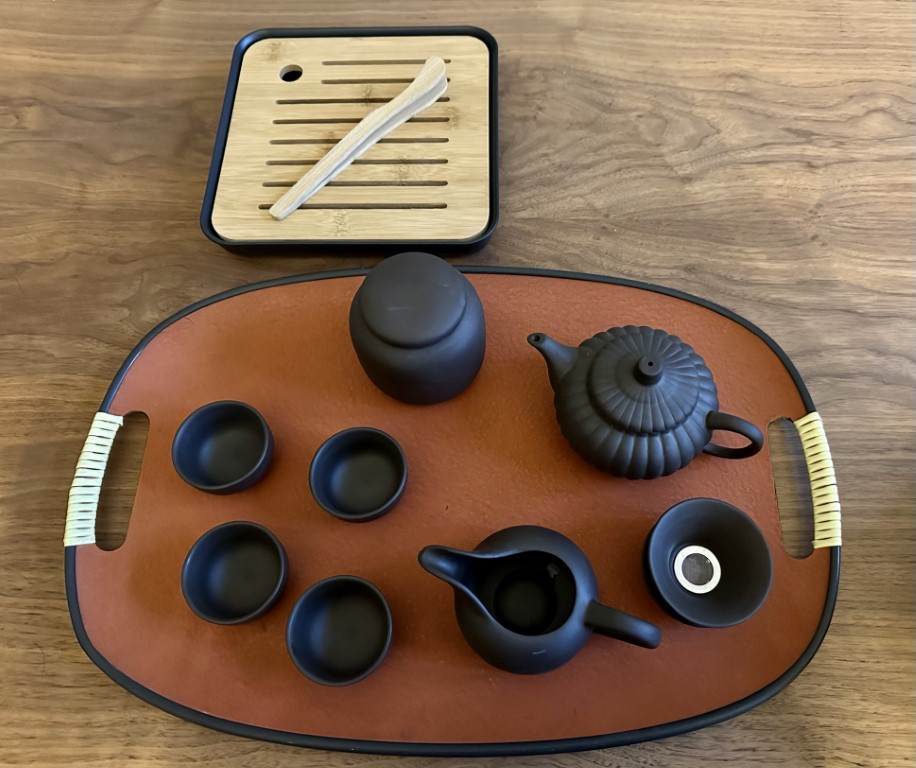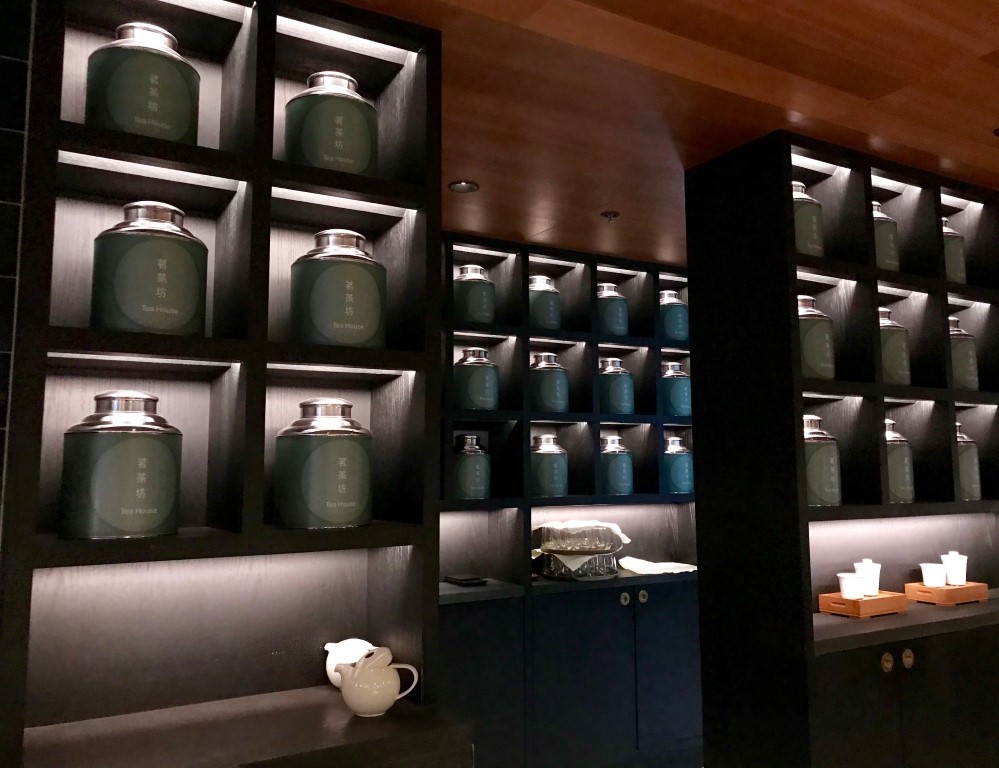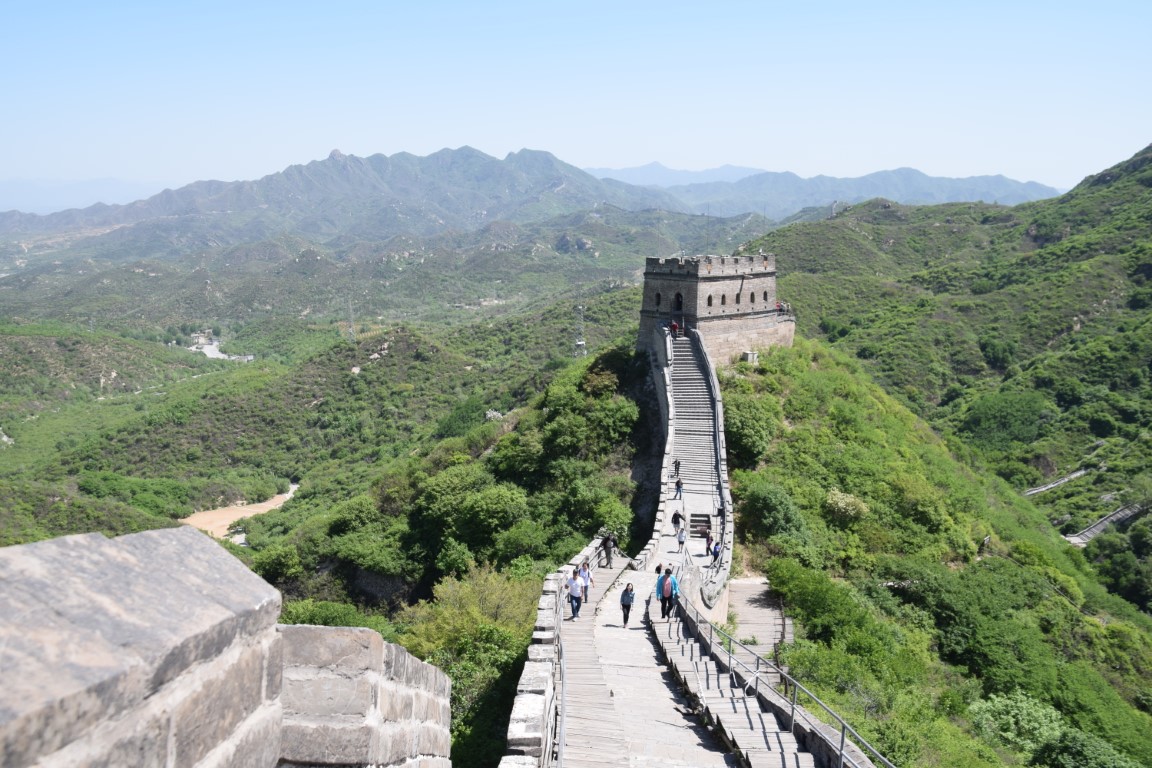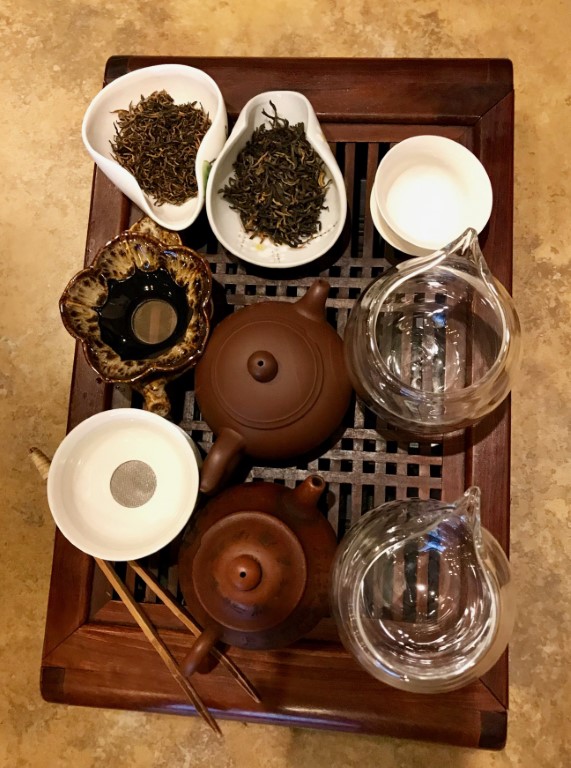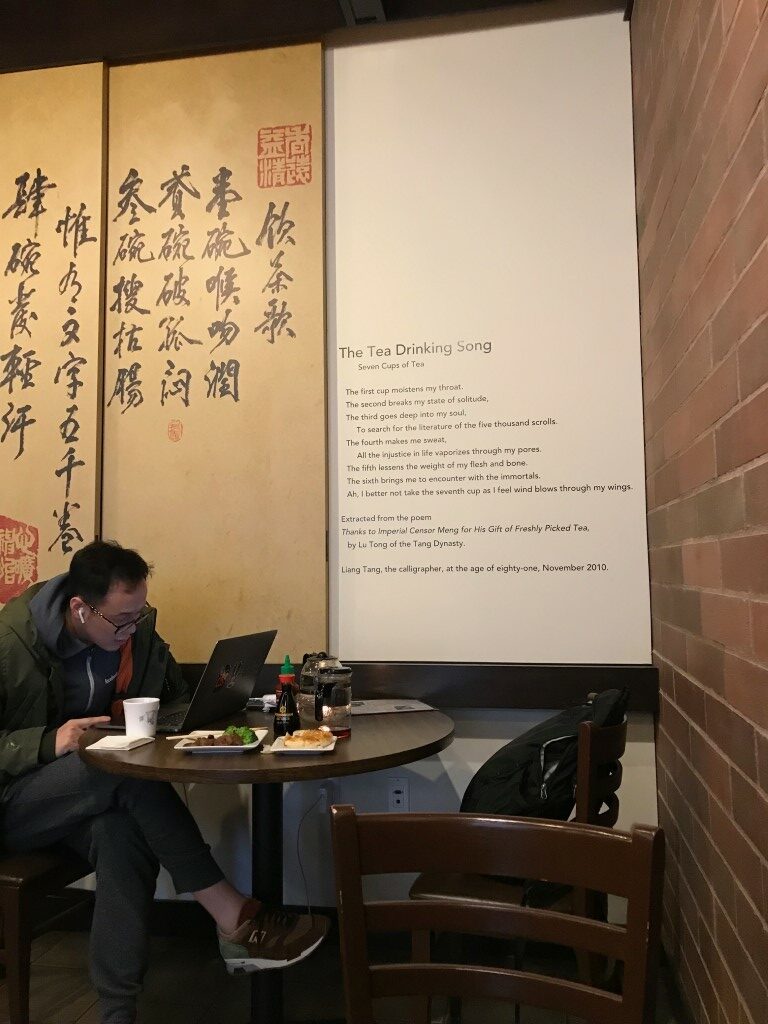After the busy December holidays, and now at the last day of the lunar New Year, I’ve taken stock of my blessings and considered what it is I’d like to celebrate, continue, and discard, learn, and otherwise accomplish in this new year. One thing I am keeping is my habit of taking brief coffee or tea breaks during my day. Taking time for this is a practice I’ll continue because it grounds me. These breaks provide quiet pleasure and rejuvenation as I move through my day. My gift to myself this month was a most lovely little Yixing tea set from Umi Tea Sets.

Purple Clay Golden Bamboo Automatic Tea Set. The black and gold is calm and elegant. It comes with a semi-automatic tea strainer that allows you to control the flow of water. (Photo courtesy Umi Tea Sets)
Introducing the World of Chinese Tea Sets
Umi Tea Sets is a Chinese company that carries an exquisite line of tea sets and all the bells and whistles that go into Chinese tea service. They carry Gongfu, Chinese, and Japanese tea sets, made of Yixing clay, cast iron, ceramics, porcelain and more. There are both traditional and modern sets. They have individual tea cups, tea trays and other tea accessories, as well as a collection of high quality Chinese loose teas.
The design and workmanship of these tea sets, tea pots, cups, and the vast collection of tea accessories is impressive. What tea accessories are available? Depending on your experience with Chinese tea, it might very well be more than you knew existed. There are teapot trays, teapot stands and caddies, teapot brushes, tea washers, fair ups, and tea utensil sets.
The beauty and utility of their wares really impressed me.
Tea Pets
What is a tea pet? No, that not a typo for “teapot.” If you don’t know, don’t feel badly. I admit I’ve had no prior knowledge of them. Umi Tea Sets carries a whimsical collection of tea pet. Tea pets might be made in the shape of animals, children, flowers, or whatever comes into a designer’s head. Often collected, they sit in a tray on a table or place of display. The pets are nourished by pouring leftover tea over them, and over time, they give off a warm scent and well as add a bit of fun to the tea ceremony.
The Chinese love pandas. After my visit to the Panda Sanctuary in Chengdu, I certainly understand why. The tea pet pictured below is a favorite from the company. Personally, I really like the unglazed tea pets that really show off the purple clay.
Yixing Purple Clay
I was most taken by the Yixing purple clay sets. Yixing clay is a prized and versatile clay. The clay is found near the Taihu Lake region in the Jiangsu Province, about two and half hours drive west of Shanghai. The two towns of Dingshan and Shushan have today become centers of pottery making using Yixing clay. (Collectively, the towns are known as Dingshuzhen.)
Purple clay is found elsewhere in China, but the clay in the Yixing area is by far the most prized.
Pottery from this clay has been made since the Neolithic Period. Yixing teapots have been made since the 16th century, and some of the work from those potters is still revered today.
Yixing clay is known as “zisha,” which means purple sand. The “sand” contains mica and quartz and other minerals that give it a variance of five colors: purple clay, red clay (known as hongni or zhuni, and green clay, as well as white clay (an ivory or creamy yellow) and a tangerine-yellow clay.
The clay is also free of toxic materials, including lead, arsenic, cadmium, and others.
The Yixing tea set pictured below shows just how ornate and beautiful these sets can be. I really like how the craftsmanship shows through as well as the natural beauty of the purple clay.
Craftmanship and Art
I love the craftsmanship and smoothness of this unglazed clay. The pieces look like they’d have texture, partly because of the warmth of the slight sheen and the ever-so color variations. But the are as smooth as can be and not at all sticky to the touch. (Stickiness, in fact, is an indication that your clay may not be authentic Yixing purple clay.)
The Yixing wares are handmade, rather than thrown on the wheel. The craftsmanship is excellent and really appreciate the fit of the pieces with covers, and the seamlessness of the handles and other details.
My Yixing Purple Clay Travel Tea Set
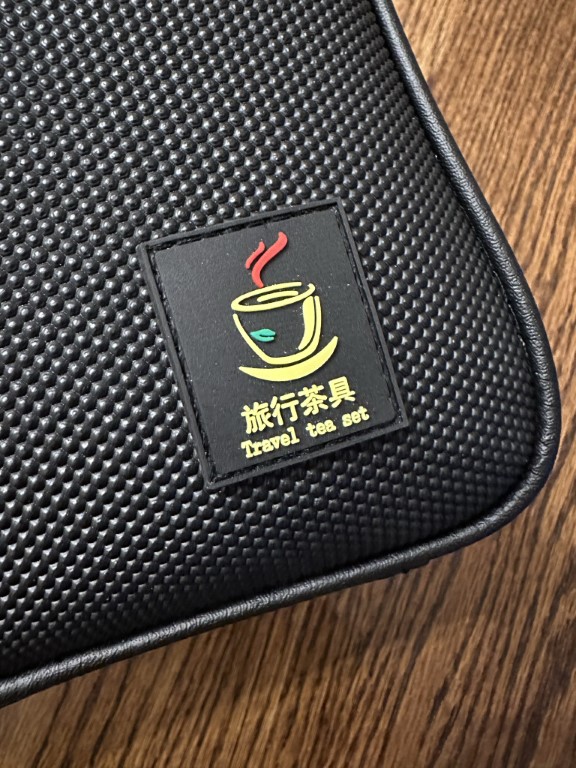 My travel size Yixing tea set came in a well-well made, padded zippered carrying case. I haven’t traveled with it yet, but you really could. Using this set has become a special pleasure. It really does encourage my enjoyment of having tea.
My travel size Yixing tea set came in a well-well made, padded zippered carrying case. I haven’t traveled with it yet, but you really could. Using this set has become a special pleasure. It really does encourage my enjoyment of having tea.
I take the time to notice the aromas of the tea before steeping. I pay more attention to preparing the tea and really letting that be part of the enjoyment. And I notice the color and flavors of the tea more. Holding the cup in my hand and pouring repeated little cups of the brew is a pleasure in itself.
Why Tea?
We all know tea has medicinal benefits. Whether drinking tea alone or with friends and family, tea is revitalizing and an emotional comfort.
My own background in tea is mostly casual and I don’t claim to be a trained expert. But I’ve learned to appreciate the incredible diversity and quality of teas.

Lu ‘an Gua slice, a rare green tea unique to China. Lu ‘an Gua Slice (Gua Slice, slice tea for short) is a special kind of green tea. It is produced in Qishan, Lu ‘an City, Anhui Province. This tea is one of the top ten famous teas in China. It has rich cultural connotation. Among all the tea leaves in the world, Lu ‘an Guapao, made from a single raw leaf, is the only tea without buds and stalks. (Photo courtesy Umi Tea Sets)
Why Travel?
And at home and on my travels, I have enjoyed learning about teas.
Visiting British tea houses is an experience to be enjoyed and an opportunity to learn some Western practices.
I appreciated the practice of being offered a hot glass of mint and black tea upon entering hotels in Morocco. (Most welcome when coming in from the heat outdoors.)
In India, I loved the variety of chai flavors wherever we went.
In Thailand, spiced red tea caught my fancy.
And in Myanmar, pickled teas (lahpet) are a treat.
I spent seven weeks visiting China in 2019, and enjoyed seeing just a smidgen of how tea is served across this diverse country. I enjoyed the formality of a 21-step Gongfu tea ceremony, as well as the more casual and simple pots of po cha in Tibet, which combines black brick tea and yak milk. In Hong Kong, I made a special visit to Ying Kee Tea House, considered to be Hong Kong’s oldest tea house. I came home with some quality teas for myself and my kids, who are also avid tea drinkers.
At home in the U.S., we can enjoy visits to Chinese and Japanese teahouses.
So, besides enjoying the flavors, warming and relaxation tea provides, tea invites a window into world culture. Tea practices are an insight into a people and culture. Exploring opportunities to learn when we travel or visit options in our own home countries lends insights and connection. Experiencing their practices and sharing our own are related to how we live, what we enjoy, our arts and crafts and music, the games we play, and our sports and athletics.
Learn More
Umi tea Sets’ website offers the equivalent of a class in tea sets and tea ceremony. I’ve spent more time than I should admit enjoying browsing their sets. Even more so, I learned from reading their informative text and watching their artfully done videos. Buy from them directly and they provide free shipping. They’ve been in business since 2012.
Wishing you gong hay fat choy—happiness and prosperity—in the New Year!
For More:
-
-
- Umi Tea Sets, Tea Sets, Exquisite Porcelain Tea Set On Sale – Umi Tea Sets
- On our site: https://www.confettitravelcafe.com/jane-pettigrew-world-of-tea-regions/
- On our site: https://www.confettitravelcafe.com/afternoon-tea-peabody-memphis-hotel/
- Also our site: Harney and Sons Teas, https://www.confettitravelcafe.com/harney-sons-teas/
- And still more on our site: Smith Teamaker Teas: https://www.confettitravelcafe.com/smith-teamaker-excellence-in-teas/ and https://www.confettitravelcafe.com/smith-teamaker-holidays/
-
-All photos as credited. Cover photo by Nancy Zaffaro.







